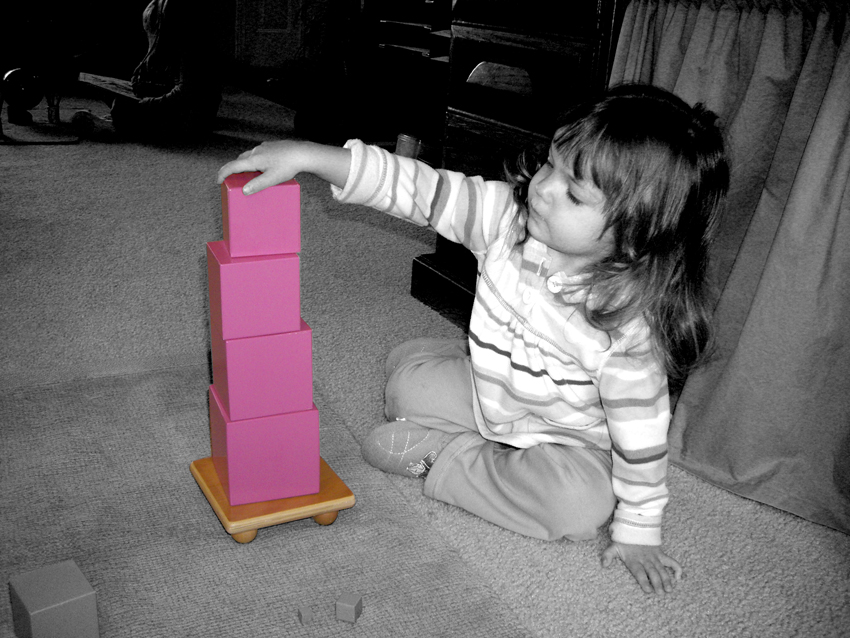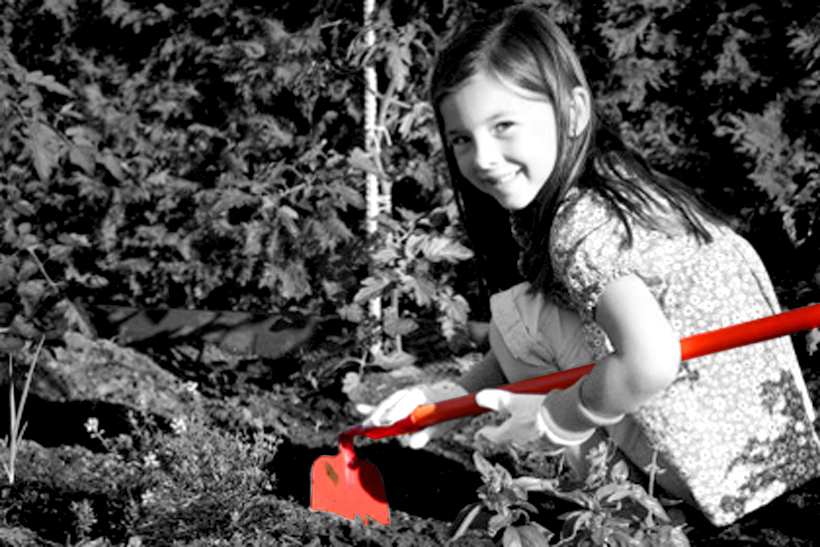Montessori Curriculum: Areas of Learning There are five main areas in the program:
Practical Life
Children are provided with a wide variety of materials that are generally found in the home. They carry out familiar and meaningful activities that Care for the Environment: sweeping, mopping, watering plants, cleaning tables and windows; Care of Self: pouring a drink, washing self, dressing and food preparation, and are offered the opportunity to learn about socialization through exercises of Grace and Courtesy.
Practical life exercises are fundamental to the whole program. They lay foundations for the 3 year old for their later activities in other areas. The activities are done not only for their own sake but also to develop inner discipline, organization, independence and orderliness of the classroom.
Sensorial Life
Through manipulating specifically designed materials that isolate qualities such as colour, shape, order, dimension, distance, texture, temperature, volume, pitch, weight, taste, similarity and sequence the child is supported in their learning and discovery of their surroundings. Refinement of fine motor skills, visual and auditory senses develop coordination and the ability to order and classify.
Language
Language development is an integral part of all activities in the classroom and involves all areas of the environment. Spoken language forms the basis for the child’s written work and later understanding of what has been written i.e. reading.
To build the foundations necessary for literacy, phonetic sounds are introduced through materials called sandpaper letters, these develop a child’s fine motor and writing skills. The development of a child’s reading skills is through the use of the moveable alphabet, where simple phonetic words extend to more complex words, sentenced structure and grammar.
The Children’s House presently offers 5 different spoken languages within the environment.
Mathematics
The program lays the foundation in maths concepts with concrete materials. The materials are designed to take children from a physical concept of numbers, through to an abstract level of understanding of mathematics.
As the child explores spatial relationships, distance, grouping and quantity, the role of number s is developed through the use of equipment such as numbers rods, counters, spindles and the bead system.
Cultural Studies
This area is as wide and varied as possible. The study of Culture extends to and incorporates Art, History, Geography, Biology, Zoology, Botany and the Physical Sciences. By presenting and exposing other cultures and lifestyles, the child learns about the world they live in. Throughout the year, music, dance, foods, language, and customs from various countries are explored, to give the child an opportunity to experience other cultures.
Outdoor activities
An important part of a child’s development is their activity in the outdoor environment. Our indoor and outdoor environments are closely related and have been designed by Prue Walsh. Prue is an experienced Early Childhood Educator who specializes in designing physical environments within early childhood settings. Prue has consulted on over 2500 projects both in Australia and overseas, and her approach gives paramount importance to meeting children’s play and developmental needs. Through these exceptional play spaces children are able to extend their social skills through co-operative interaction and concepts explored with classroom materials are applied to the wider outdoor environment.

















